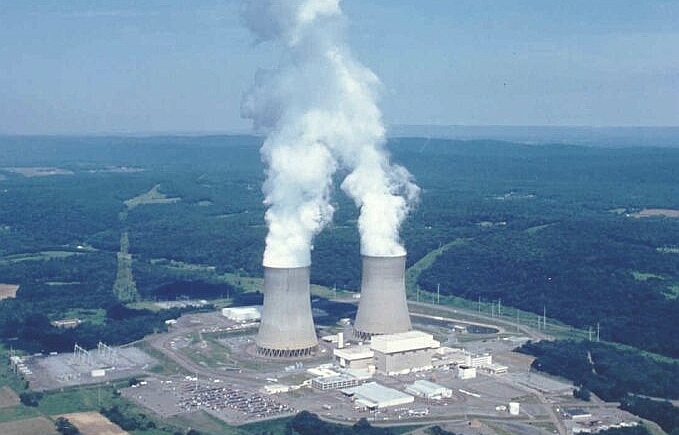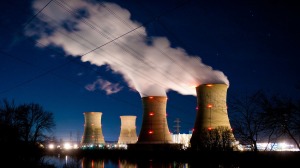Nuclear power has a terrible reputation among environmentalists, and not without justification. I’ve already written about the economic and policy consequentials of nuclear power here https://medium.com/@Magnus_Jamieson/costing-the-future-552a9740ef23, but I’ve not yet addressed the safety of nuclear reactors themselves.
Three major incidents in previous years have turned what was once enthusiasm into fear and apprehension. The Chernobyl Disaster, Three-Mile Island, and the ongoing Fukushima disaster each represent different failures of risk prevention within the industry, and the issues concerning how to dispose of waste have never been adequately addressed. However, it is worth objectively analysing what actually happened during these incidents to understand why it is we hold these apprehensions and whether or not they are truly justified.
Nuclear Power in the World: As it Stands
As part of a global effort to reduce carbon emissions, as well as secure non fossil-fuel energy supply for the future, nuclear-fission powered electricity generation has recently been attracting significant investment in the United Kingdom. The recent approval given to development of the Hinkley Point C nuclear power plant is the first new nuclear power station approved in the UK for nearly twenty years (Department of Energy & Climate Change 21 October, 2013). Nuclear power has been growing worldwide since the sixties as a reliable, low-carbon alternative to fossil fuels.
Out of a total electricity generation capacity of 356.65TWh (Terawatt hours), nuclear stations provided 70.61TWh of the UK’s consumption (19.80%) in 2013, an increase of 366.38% from 15.14TWh in 1965 when records began. Globally, nuclear power provided 10.76% of the world’s consumption in 2013 (British Petroleum Company June, 2014). According to the World Nuclear Association, there are currently 435 civil nuclear reactors in operation around the world, with a further 71 under construction (World Nuclear Association 2014).
Nuclear Power Generation
Nuclear power generation is actually a fairly straightforward process, and the science behind it has been well understood since the Second World War- this is because the processes which govern it are the same processes through which nuclear bombs function. To understand how safety failures occur, it is important to have a rudimentary understanding of the physical processes involved.
Nuclear fission works in three stages;
- Radioactive particles are emitted from a highly radioactive source, usually Uranium-235-doped Uranium-238, contained in pellet form in metal cased fuel rods (often a hard, unreactive metal such as zirconium)
- The incident radiation is “slowed” by “Control Rods” which regulate the nuclear reactions within the reactor by interacting with “fast” radiation from the fuel rods and “slowing” it down by expending energy as heat
- The “slowed” radiation is re-absorbed in the fuel rods, splitting the fuel atom into two separate atoms (nuclear fission), releasing energy as heat
In an LWR (light water reactor), the heat generated from nuclear fission is used to superheat water- which in turn becomes high-pressured steam and is used to power a turbine and hence generate electricity. The water within the reactor is heated and condensed in cycle, ensuring it does not return to the environment, and the reactor is stored in a containment building, as shown below (Gómez Cadenas 2012).

This method of generating electricity is well understood and the risks well known and understood. The most glaring health and safety issues concern managing the nuclear reaction itself, nuclear waste, and containment of the reactor.
The nuclear reactions within the reactor need to be strictly monitored and regulated at all times. If the reaction rate is too low, not enough fissile reactions will occur, causing the reactor to stop working. If the reaction carries on unregulated, a chain reaction will occur leading either to a catastrophic nuclear reaction and nuclear explosion (i.e. the reactor becomes a nuclear bomb), or overheating of the moderators and an explosion which breaches the reactor containment, releasing radioactive materials into the environment.
Another issue from nuclear power generation is how to deal with the, highly radioactive, and often incredibly toxic, waste products of nuclear fission. Nuclear waste can be carcinogenic, toxic, and extremely damaging to organisms or wildlife that come in contact with it, and so its storage, transport, and disposal are major issues for the industry.
Poorly designed containment for the reactor may also result in radioactive water being returned to the water cycle, or radiation leaking from the reactor itself into the environment.
Risk Management in the Industry
To understand how failures occur and why they happen we have to look at the procedures in place surrounding nuclear safety and how they actually function. Risk management such as Environmental Impact Assessment and Risk Assessments are carried out before the construction of any nuclear power plant, and are designed to mitigate risk pre-emptively or find ways of avoiding it altogether. Risk Assessment is then used to improve procedures over the lifetime of any nuclear power plant to ensure procedures are continually improved and maintain relevance. In the context of nuclear power generation, this means ensuring the reactors are built safely, in appropriate locations, and managed safely in accordance with protocols.
Nuclear power operates on the basis of Defence in Depth. That is, there are different “layers” to risk prevention, be they human or mechanical features of design. The following table illustrates this concept and shows a description of each “layer”. (Slugeň 2011)
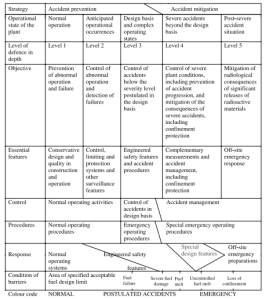
This approach is useful because it compartmentalises safety procedure and helps describe the different aspects and responsibilities associated with health and safety; illustrates overlaps of responsibility; as well as the difference between mitigation and prevention. This allows each “layer” to be optimised to ensure best practise. Weaknesses can be assessed and mitigated efficiently and responsibilities assigned appropriately.
This modular approach, and the fact it illustrates the overlap between mitigation and prevention, reinforces the idea that there is still a very human responsibility in accident prevention – mechanical safeguards and preventative measures are still reliant on human oversight, as they are in any industry. The scale and magnitude (both in human life and environmental damage) of nuclear incidents makes it imperative that there is effective oversight in ensuring protocol is followed, and, if they fail, ensuring disaster mitigation is effective.
Nuclear power generation companies, as part of their Corporate Social Responsibility, have a moral, ethical, and legal duty to ensure their workplace is safe for their staff, and their power plants do not cause damage to their environment. This requires not only mechanical and procedural safeguards to be in place to prevent accidents happening in the first place – such as reactor containment, maintenance procedures, and emergency shut-offs – but protocols to allow staff to react to events if and when they happen. Failure of management to ensure protocol is followed- whether it is during Environmental Impact Assessment or Risk Assessment, during the running of the plant, or in the aftermath of an incident- can have devastating consequences.The strength of this model can be understood by analysing its most notable failures.
The Chernobyl Disaster
In 1986, an explosion breached the containment of Reactor 4 of the Chernobyl Nuclear power plant in Ukraine, exposing the fuel rods and throwing highly radioactive material into the atmosphere. Due to the nature of the accident, the highly radioactive nature of the site, and the relatively primitive nuclear technology of the time, it is hard to know exactly what happened, however, in (Beresford and Smith 2005), the major factors behind the disaster are outlined, as well as a comprehensive account of the environmental and socioeconomic consequences.The following image shows the power plant after the explosion and is from (Beresford and Smith 2005).
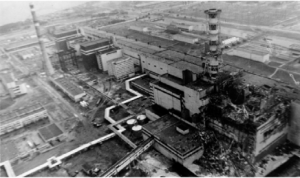
The incident was caused by an experiment involving Reactor 4, to see what would happen to the electrical supply of the station should its primary supply fail, and was due to a series of failures (both systematic and mechanical), and human error.
- Poor reactor design – as the temperature of the reactor increased, this would cause the output of the reactor to increase, causing a destructive positive feedback loop. Most reactors of the time had systems which would reduce power to stabilise temperature
- The specifications of the experiment were altered at the last minute – the reactor’s output was reduced in preparation for the experiment at 13:00 but a last minute request for them to continue generation meant they had to increase the output of the reactor from 14:00 until 23:10
- The reactor began to act erratically – the power output had dropped from 720MW to 30MW by 23:40 due to a problem with the automatic control rods. The experiment went ahead anyway.
- Control rods were removed to increase the output, meaning they would have had less control over the reactor and any emergency shutdown would be hindered
- The water coolant flow to the reactor was variable and unstable, meaning the temperature of the reactor was fluctuating unsafely prior to the explosion
- Fundamental emergency safety systems had been shut down in order to perform the experiment
- When the experiment started, the power output of the reactor was below the criteria of the experiment
The experiment went ahead despite this, and (Beresford and Smith 2005) describes the seconds leading up to the explosion:
“Thirty seconds after the experiment began, the reactor power began to increase rapidly and ten seconds later the operators attempted a full emergency shut down by re-inserting the control rods. The reactor power was now increasing exponentially leading to a failure in the pressurised cooling water system. Eight seconds later, the reactor exploded (an explosion of steam, not a nuclear explosion) scattering burning core debris over the surrounding area.”
There were then more failures following the accident, in the mitigation stages;
- There were no effective automated or remote fire prevention systems in place to put out the fires caused by the reactor explosion, meaning humans had to physically expose themselves to high radiation levels to contain the reactor fires and prevent a more catastrophic nuclear explosion
- Anti-radiation medication was issued, but ad hoc, as opposed to in a systematic way
- The firefighters were not adequately trained in dealing with radioactive material fires
- Radiation exposure in fire fighters was not monitored
- Nearby towns such as Pripyat were not alerted to leave their homes until the next day and people were still outside of their homes the morning after the explosion having not been warned to stay indoors
To summarise, there were risk management failings on every conceivable level.
- The power plant was built next to a densely populated area, putting thousands of lives at risk
- Despite repeated safety warnings, the experiment went ahead
- Fundamental safety mechanisms were undermined
- The emergency response and mitigation was poorly organised and desperate
- The experiment itself was poorly organised and despite last minute changes was unjustifiably allowed to proceed
- Because containment had been breached, lives had to be put at risk containing the radioactive material
In short, on every level, the principle of “Defence in Depth” was undermined. Physical safeguards must be allowed to do their jobs; effective leadership requires organisation and recognising of dangers, and when to know when to stop a hazardous activity; safety procedure must be designed to minimise the risk of harm to people, whether it is at the planning stages or during crisis periods and damage limitation.
The disaster could have been prevented at several stages by effective leadership recognising the untenable risks that were emerging, or by allowing the inbuilt safety mechanisms to do their jobs. Performing such an experiment on what was a fundamentally dangerously designed reactor was an intolerable risk which, in the end, resulted in environmental disaster and the needless loss of human life and ecological integrity.
Safety procedure is only effective when it is followed, and, in the case of Chernobyl, it was undermined at every stage. Chernobyl was entirely avoidable and is more of a reflection of human failure than the inherent danger that is present in nuclear power. It is noteworthy that, despite the scale of the destruction, there was still no nuclear explosion- the worst case scenario of any nuclear power plant- despite the repeated breaches of safety protocol.
Three Mile Island
On 28th March 1979, at the Three Mile Island nuclear power plant, USA, a plume of radioactive gas was released due to a cooling fault. Misinterpretation of data from the TMI-2 reactor of the plant resulted in water being super-heated, with the result that the cooling system failed and the reactor melted. The fault was due to a valve becoming stuck open, resulting in cooling water leaking from the system. This resulted in the boiling of the water into steam and the eventual melting of the reactor, and due to chemical reactions with the zirconium fuel cases, the production of hydrogen.
A full technical report of the failings leading to the incident is outlined in a report produced at the time (Cummings 1980), as well as a summary of the event produced by the World Nuclear Association (World Nuclear Association January, 2012), but the event can be summarised thus;
- A malfunction in the secondary coolant system caused the primary coolant circuit to overheat
- This caused the reactor to automatically shut down
- One of the valves failed to close as it should have
- Coolant drained out of the system, leaving an insufficient amount to dissipate the residual heat
- The reactor overheated and melted
- Radioactive gas built up in the reactor containment chamber
- While the radioactive gas was being extracted, the compressors leaked, releasing radioactive gas into atmosphere
The main cause of the incident in this case was mechanical failure of the primary relief valve exacerbated by a poorly designed reactor monitoring system which, in the case of the relief valve, indicated only that a signal to close the valve had been sent – not the actual status of the valve itself. Unlike Chernobyl, however, there was no explosion. The reactor containment was not compromised – the leak happened due to external equipment, not the reactor itself – and there was no loss of life, nor any adverse health effects to anyone in surrounding areas (Tilyou 1989).
The incident was attributable to three main causes-
- Mechanical failure
- Misinterpretation of data
- Poorly designed measurement systems
However, unlike Chernobyl, the safety mechanisms were allowed to perform their tasks. The reactor shut itself down within a second; the containment of the reactor was not breached, and in fact the other reactor on Three Mile Island, TMI-1, continues to perform exceptionally to this day. The release of gas happened because of the failure of equipment they used when clearing that radioactive material out, and even then, the most hazardous material was filtered out. So, as far as Three Mile Island concerned, the inbuilt safety mechanisms performed adequately. However, the whole reason gas built up in the first place was due to poorly designed measurement systems and incorrect emergency response due to inaccurate training – however these issues can easily be remedied and lessons learned from them, and it is worth noting the staff performed exactly how they had been trained to do.
It is also worth noting that this event preceded Chernobyl by some 7 years, which makes the disastrous inadequacy of Chernobyl’s disaster management all the more surprising. The emergency safety measures of Three Mile Island had been shown to work (at least to the extent that there was no explosion and the containment was not breached), which could perhaps have made the Chernobyl supervisors complacent about their own safety procedures. Therefore, adaptation of training procedures and improvement of measurement equipment could easily have prevented another Three Mile Island type incident occurring again.
Fukushima
In March 2011, the Fukushima Daichii nuclear power plant was struck by a tsunami, inundating the site and disabling the backup reactors. The containment and cleanup operation is still underway at the time of writing. A concise account of the events surrounding the plant can be found in (Tsuruda 2013), but to summarise:
- In March 2011, a series of earthquakes and Tsunamis struck Japan
- Seismic activity disabled cooling and control of the 3 nuclear reactors at the site
- A tsunami struck the site, disabling the backup diesel generators
- Reactors 1 and 3 overheated, causing explosions
- Reactor 4 exploded later
- Workers flooded reactors with seawater to cool them
- Hundreds of tonnes of radioactive water leaked from site
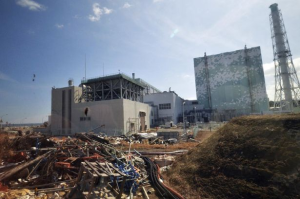
(Best, J. 2013) – Fukushima power plant
As the incident is still ongoing and studies are still being performed as to its effects, it is not possible to offer a thorough analysis of the effects of the incident, as it could yet get worse. However, it is still worthwhile to examine the circumstances surrounding the disaster.
- Fukushima was built in a coastal region of a country which suffers significant tectonic activity
- The plant was struck both by an earthquake and a tsunami
- The backup reactors were inundated and failed, leading to the meltdown of three reactors
It is difficult to account for such extreme conditions and events as Fukushima suffered, however, it seems difficult to justify placing such a dangerous site
- On the coastline, where accidental discharges could have the most devastating ecological impact
- In a region which suffers high levels of tectonic activity
The failure of the backup generators in such a vital site is also a damning indictment of its design. Backups and emergency systems are redundant if they can be disabled by the same event which affects the nuclear power plant.
Fukushima’s plight can be attributed to poor risk assessment and inadequate disaster mitigation, which has resulted in a containment operation costing millions of dollars and which has released hundreds of tonnes of highly radioactive material into the environment.
In Conclusion – Are Nuclear Power Plants Safe?
It bears repeating that there are over 400 nuclear reactors in operation worldwide, operating completely safely. Nuclear incidents are exceptionally rare due to the methodology of risk prevention which is, more often than not, more than adequate.
In the case of Chernobyl, the safeguards designed to prevent disaster were intentionally undermined, jeopardising the first three layers of Defense in Depth. This resulted in the displacement of thousands of people and unprecedented ecological harm. In order for safety protocol to be effective, it actually has to be followed.
Three Mile Island illustrated the cost of inadequate measurement systems. Although the safeguards and containment operated as they were designed to once the incident was in progress, effective measurement systems which were indicative of the status of the system, as well as more effective training, could have prevented the incident.
Fukushima is an exceptional case – it is hard to prepare any system for being simultaneously hit by an earthquake and a tsunami. However, the location of the site, and the susceptibility of the safeguards to be disabled by the same event as disabled the main reactor, is poor design and poor risk assessment, and what is an ongoing incident could still get worse.
Effective implementation of risk management – be it at risk assessment, procedural risk control, or at the design stages of the reactors themselves, could have prevented all of these incidents. I haven’t even begun to address the issues surrounding Uranium mining and waste transport.
If risk management protocol is followed adequately, nuclear reactors are entirely safe – but, the nature of risk management is as much to do with mitigation as prevention. When nuclear accidents happen, the results are so devastating because of the nature of nuclear waste and radioactive materials. When making decisions on energy policy, these factors have to be considered with great caution, especially compared to emergent renewable energy technologies. We must replace fossil fuel generation – but is it justifiable to replace CO2-emitting fossil fuel based technology with radiation-emitting Uranium or Thorium based technology?
In Scotland, we simply don’t need nuclear power, and this needs to be recognised by Westminster. We have a target of 100% of nuclear generation via renewables by 2020- ambitious, but achievable if issues like transmission (mentioned in my previous blog) are addressed. Westminster has just thrown billions of pounds at a privatised nuclear power reactor which will be built and operated by Chinese and French state power companies. Energy needs to be devolved to Scotland where our comprehensively different ambitions can be recognised in policy making, because having the environment devolved without energy policy is like trying to eat soup with a fork.
Further Reading
Beresford, N. A. and Smith, J. 2005. Chernobyl: Catastrophe, consequences and solutions. Springer Berlin Heidelberg.
Best, J. 2013. Fukushima: Japan declares toxic water leak at nuclear plant a level 3 “serious incident”. Mirror. [online]. 21/08/2013.
British Petroleum Company June, 2014. BP Statistical Review of World Energy. [online]. Available from: http://www.bp.com/en/global/corporate/about-bp/energy-economics/statistical-review-of-world-energy.html.
Cummings, G. E. 1980. Operator/Instrumentation Interactions during the Three Mile Island Incident. IEEE Transactions on Nuclear Science. 27(1): pp.931-934.
Department of Energy & Climate Change 21 October, 2013. Initial agreement reached on new nuclear power station at Hinkley. [online]. Available from: https://www.gov.uk/government/news/initial-agreement-reached-on-new-nuclear-power-station-at-hinkley.
Slugeň, V.Nuclear safety. In: Anon. London: Springer London. 2011, pp. 3-4.
Tilyou, S. 1989. Three Mile Island–ten years later. No health consequences seen, but studies continue to assess potential effects. Journal of Nuclear Medicine : Official Publication, Society of Nuclear Medicine. 30(4): pp.427.
Tsuruda, T. 2013. Nuclear Power Plant Explosions at Fukushima-Daiichi. Procedia Engineering. 62: pp.71-77.
World Nuclear Association 2014. Number of nuclear reactors operable and under construction. [online]. Available from: http://www.world-nuclear.org/Nuclear-Basics/Global-number-of-nuclear-reactors/.
World Nuclear Association January, 2012. Three Mile Island Accident. [online]. Available from: http://www.world-nuclear.org/info/Safety-and-Security/Safety-of-Plants/Three-Mile-Island-accident/.




